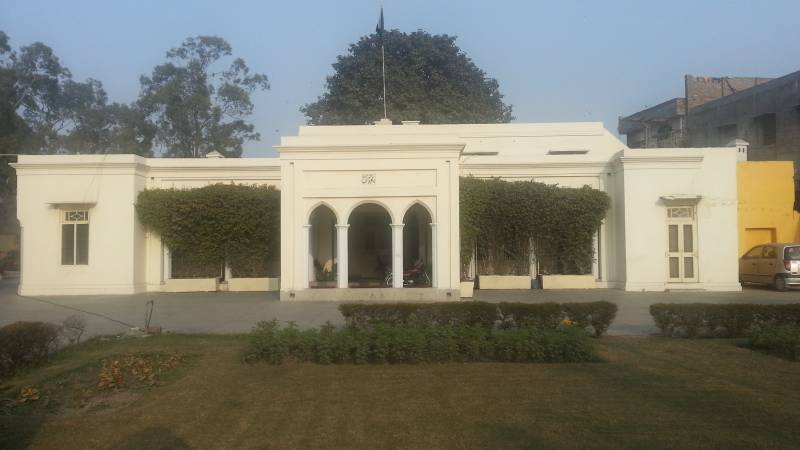Jigar Muradabadi, a renowned Urdu poet, described ishq (passion) as a river of fire which can only be crossed by getting drowned in it. Writers and poets are dreamers possessed by the ishq of words. Power on words can be a curse as well as a blessing, but one undisputed fact is that being a writer is not an easy life anywhere in the world. They struggle through life and endure hard times and economic difficulties. The greatest tragedy of a writer’s life however, is not being recognized for their work which means to them a wasted lifetime. In our part of the world, there are countless examples of men of letters who led miserable lives and were never celebrated in their lifetime. One of the very few exceptions to this phenomenon is Allama Mohammad Iqbal who was not only regarded as a great poet and philosopher in his lifetime, but remains highly honored eight decades after his death. Iqbal is the national poet of Pakistan, a country which was his brain child and created a decade after his demise. Having written equally exceptional poetry in Persian, Iqbal is famous in Iran as well where he is known as Iqbal Lahori. It is said that the Persian language has had one great poet in every century; however the greatest Persian poet of 20th century did not belong to Iran. He was Iqbal Lahori. In India, Iqbal is known for writing “Saray jahan se acha Hindustan hamara” one of the most popular Indian patriotic poems of all time.
As part of paying tribute to their national poet, Pakistan’s government acquired Iqbal’s bungalow in Lahore along with his personal belongings and converted it into a museum. Javed Manzil, which literally means “house of eternity” (named after Iqbal’s son Dr. Javed Iqbal) emerges out of the crowded monotony of Mayo Road (renamed Allama Iqbal Road) as an eye catching white colonial building with an impressive garden at the front. The architecture represents the era of its construction. There are two entrance gates and a D-ground between them. A portico stands in front of the building which allows access to the interior.
The first room you step in after entering the museum is the dining room with an oval shaped, wooden dining table and chairs. Items of European dinnerware and local brassware which remained under personal use of Allama Iqbal are displayed in two separate showcases in this room. Another interesting piece of furniture is a chest of drawers with three mirrors attached to the top of it. This must be used by people entering and leaving the house to take a look at themselves in the mirror. The passage leads to another room which served as the drawing room in which a sofa set, a table and four wooden chairs are displayed.

Several back rooms at Javed Manzil serve as galleries. One such gallery displays Allama’s wardrobe which includes sherwani, pairs of shalwar qameez, waist coat, suits, caps, gloves, bow ties, collars and items of his personal use like walking sticks, wrist watch, spectacles, ash tray, cufflinks and a gold ring. Another gallery is dedicated to Allama’s historical documents and papers. It includes his degrees, certificates and passport among many other things. Pictures from the life of Allama Iqbal adorn the walls of entire Javed Manzil. Passing through a corridor, I spotted Iqbal’s famous prayer rug on which he offered prayers at the grand mosque of Cordoba, Spain. He was the first Muslim allowed to pray in the grand mosque in centuries after the fall of Moorish Spain. Unfortunately, the prayer rug isn’t properly preserved. It’s exposed to climatic erosion and nearly worn out.

Of all rooms in Javed Manzil, the small room in the far left corner of the house, right next to the drawing room captured my imagination and interest. It was Iqbal’s personal space and this is where he breathed his last in the early hours of 21st April 1938. Unlike the rest of the house which chronicles Iqbal’s life and works, this small room archives his death. Two large windows in the western wall open into the courtyard and have a view of the front garden. Iqbal’s bed is laid in front of the windows. His large pillow, bed sheet and cloak are placed exactly as they used to be eight decades ago. On the floor, ugaldaan (spittoon) and slippers are placed just beside the bed. Apart from a simple wooden chair and a table in this chamber, a small bookshelf stands against the front wall. A publicity calendar by Dilroz herbal skin care product, proprietors Sheikh Tahir Ud Din and Sons hangs on the other wall. The date was never changed after 21st April 1938. The old wooden wall clock hanging on top of the exit door ceased clicking at 4:03 am, as Iqbal breathed his last. There is a strange feeling in this room, as if death came that night and never left those four walls.

In Pakistan, Iqbal is celebrated like every great man of letters deserves to be celebrated. Various educational institutions, roads, parks and other infrastructure are named after him. Iqbaliyat, a complete discipline studying Iqbal’s poetry and philosophy is taught in Pakistan’s universities. Unfortunately, other writers and poets who were equally great in different dimensions of thought were never celebrated in Pakistan. They remained highly popular with the readers and masses at large for standing by the truth but never made it to the good books of the government. There were times when writers and intellectuals faced persecution by the state because of their political and social views. This is the reason that contrary to the civilized world, where hundreds of museums are dedicated to men of letters, Javed Manzil is one of a kind in Pakistan.






